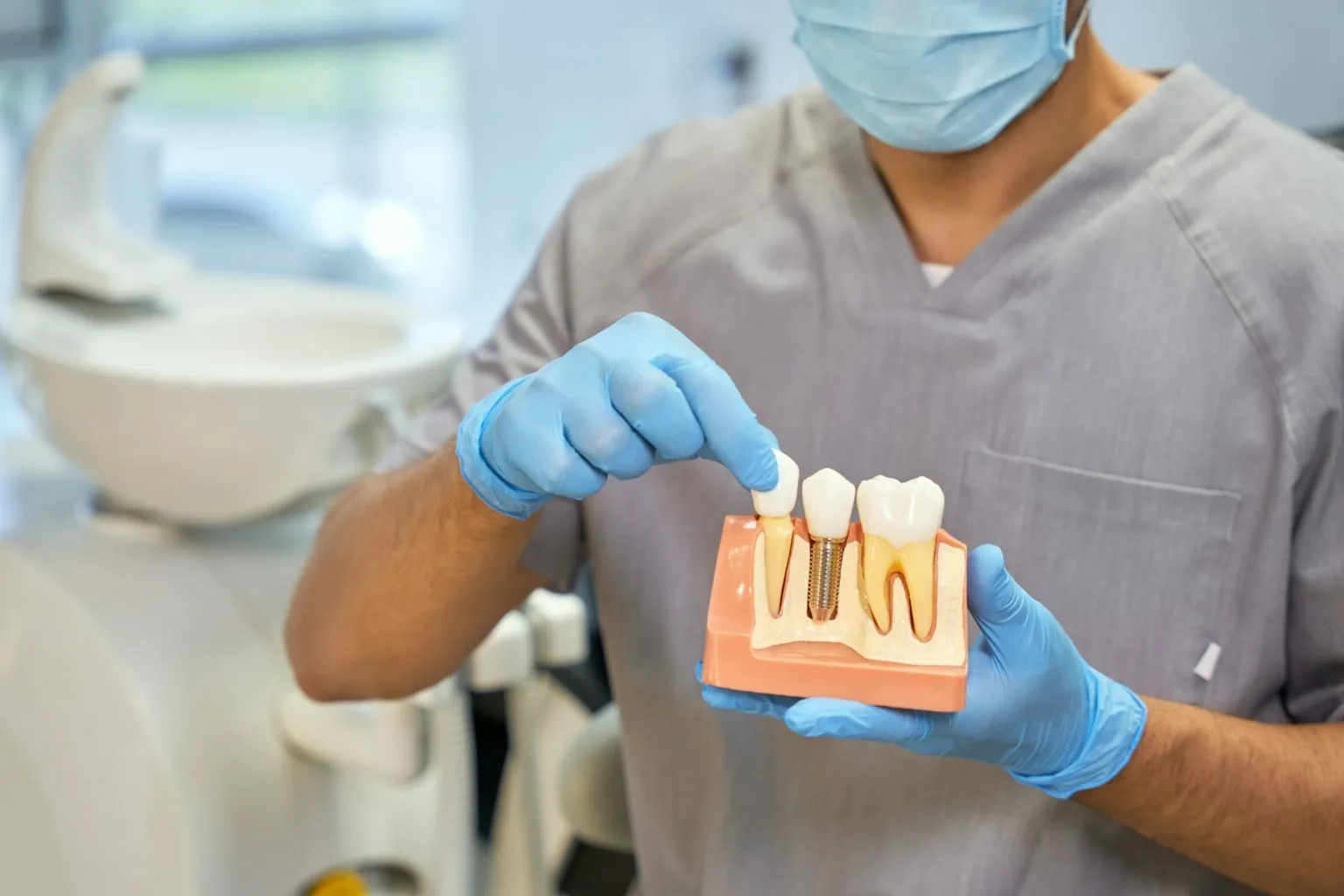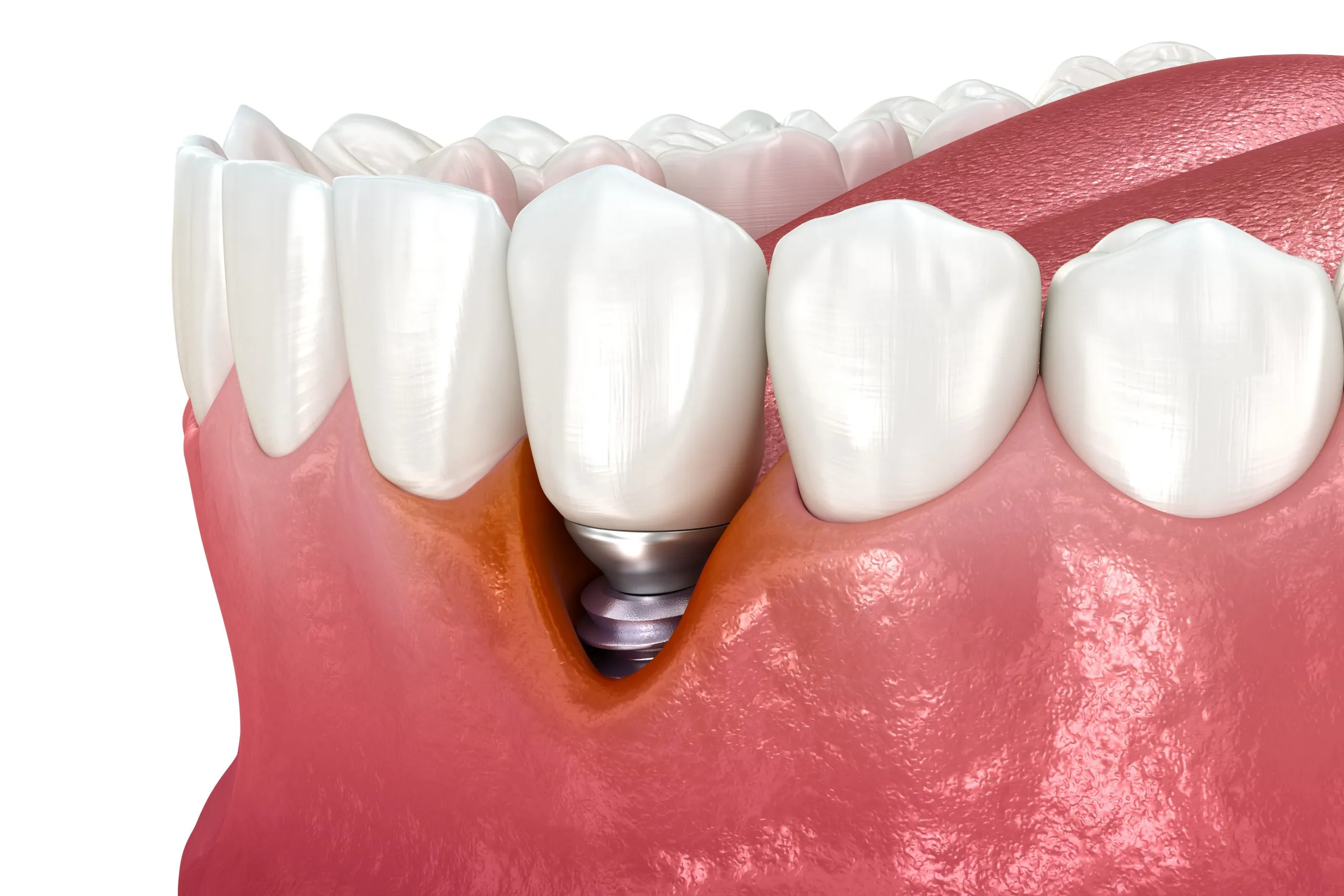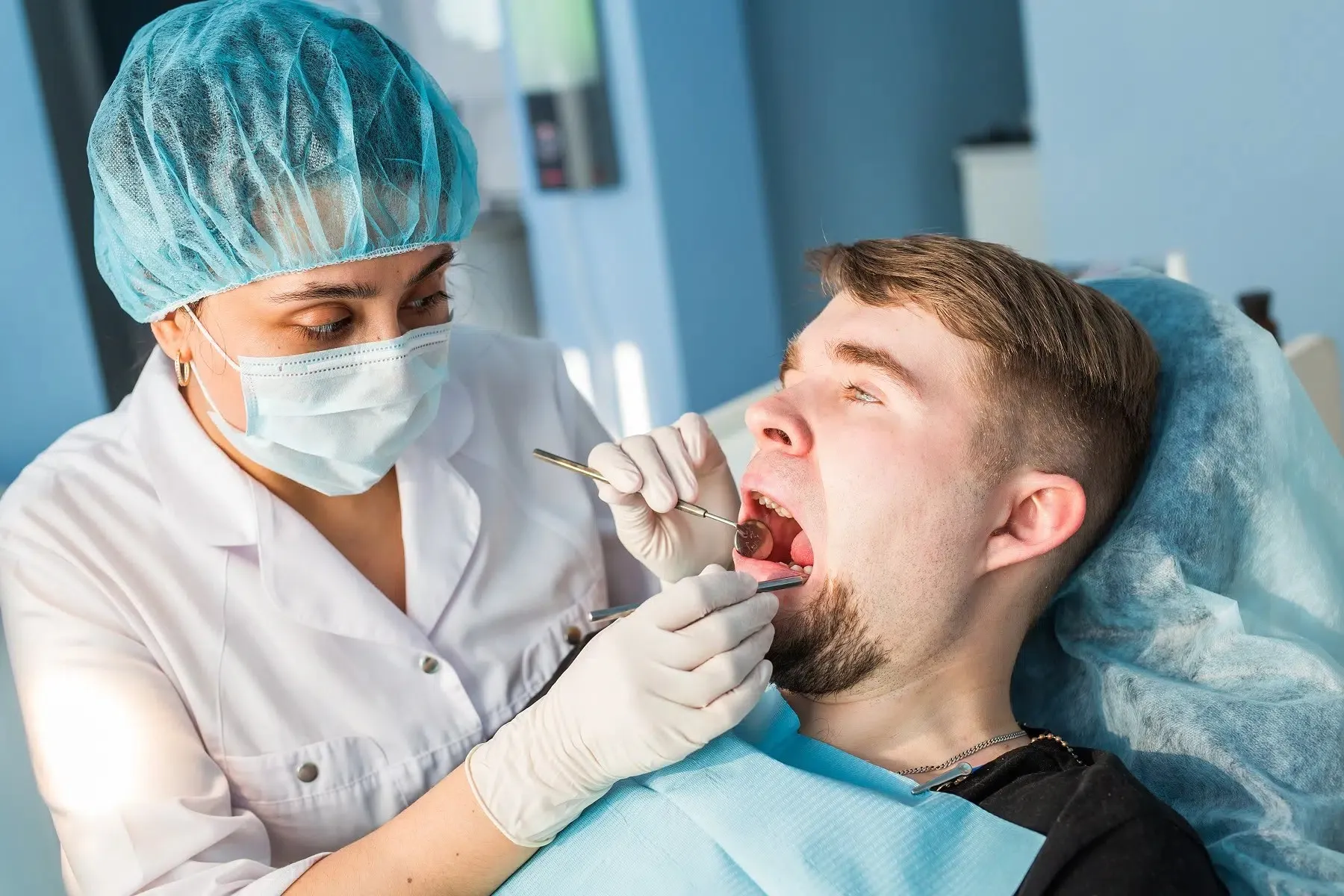
How to Handle a Dental Implant Infection Quickly | Essential Treatment Guide
Imagine the excitement of receiving a dental implant to restore your smile, only to notice discomfort, redness, or swelling around the site. While dental implants are highly successful and reliable, like any surgical procedure, they carry potential risks, including infection.
Dental implant infections, although uncommon, can jeopardize the success of the implant if left untreated. These infections can range from mild gum irritation to severe peri implantitis affecting the bone structure. Prompt recognition and timely action are critical to protect not only the implant but also the surrounding teeth and bone.
This article explores the causes, early warning signs, emergency responses, professional dental treatments, and preventive measures for dental implant infections, providing a comprehensive guide for anyone with implants or considering them.
What Is a Dental Implant Infection?
Peri-Implant Mucositis vs. Peri-Implantitis
A dental implant infection occurs when bacteria accumulate around the implant site, leading to inflammation in the gums or underlying bone. Peri-implant mucositis is an infection limited to the soft gum tissue, while peri-implantitis affects the bone supporting the implant.
The Importance of Early Detection
Peri-implant mucositis typically presents as red, inflamed gums that may bleed easily but do not compromise the implant’s stability. Peri-implantitis, however, is more serious and involves bone loss around the implant. Early intervention can save the implant and prevent more invasive procedures, such as bone grafting or implant removal.
Common Causes of Implant Infections
Poor Oral Hygiene
Inadequate oral care allows plaque and bacteria to accumulate around the implant. Patients who do not brush, floss, or use antimicrobial rinses regularly are at higher risk of developing infections.
Lifestyle Factors
Smoking and the use of tobacco products slow the healing process and increase bacterial colonization. Pre-existing gum disease that was not fully treated prior to implant placement can also compromise the surgical site.
Surgical and Mechanical Factors
Though rare, infections can result from contaminated surgical instruments or improper placement technique. Trauma or excessive pressure on the implant during the healing phase can also contribute to infection.
Early Warning Signs of an Implant Infection

Gum Changes and Discomfort
Red, swollen, or tender gums around the implant site are often the first indicators of infection. Persistent pain or throbbing near the implant should not be ignored.
Bleeding and Pus Formation
Bleeding, pus discharge, bad taste, or foul odor are clear signs that bacteria are affecting the implant site. Advanced infections may cause the implant to feel loose or unstable, signaling potential bone loss.
Immediate Steps to Take at Home
Gentle Cleaning and Rinsing
Rinsing with warm salt water can reduce bacterial load and soothe irritated tissue. Maintaining oral hygiene is important, but aggressive brushing or flossing directly on the implant should be avoided.
Pain Management and Diet Adjustments
Over-the-counter pain relief may help temporarily, but it should be taken according to recommended dosage. Avoid smoking, alcohol, and hard foods that could irritate the implant site.
Contacting Your Dentist Quickly
The most important action is to contact your dentist immediately. Early professional intervention is crucial for controlling infection and preserving the implant.
How Dentists Treat Implant Infections
Professional Cleaning and Debridement
Dentists remove plaque, tartar, and bacterial buildup around the implant, reducing inflammation and allowing healing.
Antibiotic Therapy
Infections are often treated with antibiotics to control bacterial growth and prevent the infection from spreading to surrounding tissues.
Laser Therapy and Antimicrobial Rinses
Advanced treatments like laser therapy or antimicrobial mouth rinses may be used to target bacteria directly and promote tissue healing.
Surgical Intervention
Severe infections or peri-implantitis may require flap surgery to clean infected bone, or bone grafting to restore lost tissue. Treatment depends on infection severity and how promptly it is addressed.
When Implant Removal Is Necessary
Severe Cases Requiring Removal
Although rare, some cases require implant removal due to severe bone loss, failed osseointegration, or persistent infection.
The Importance of Early Intervention
Most infections are successfully treated before reaching this stage. Early detection allows less invasive treatments to save the implant and avoid extraction.
Preventing Dental Implant Infections
Maintaining Oral Hygiene
Brushing twice daily, flossing, and using antimicrobial rinses help prevent bacteria from accumulating around implants.
Regular Dental Checkups
Routine visits allow dentists to monitor implants, perform professional cleanings, and detect early signs of infection.
Lifestyle Choices
Avoiding smoking and limiting alcohol consumption supports proper healing and reduces the risk of infection.
Following Post-Surgery Instructions
Dietary guidance, avoiding excessive pressure on the implant, and proper care of the surgical site prevent irritation and bacterial invasion.
The Importance of Acting Quickly
Risks of Delayed Treatment
Delays in addressing implant infections can lead to bone loss, implant failure, and complications affecting surrounding teeth.
Benefits of Early Intervention
Prompt care ensures treatment is less invasive, recovery is faster, and long-term complications are minimized. Early action provides more options for treatment and significantly increases the chances of saving the implant.
Long-Term Considerations After an Implant Infection

Successfully treating a dental implant infection is only the first step. Long-term care is crucial to ensure the implant remains stable, the surrounding bone and gum tissue stay healthy, and the risk of future infections is minimized.
Ongoing Monitoring and Care
Following treatment for an implant infection, dentists typically schedule follow-up appointments to monitor the healing process. These appointments often include professional cleanings and imaging, such as X-rays, to evaluate bone health and detect early signs of recurring infection. Regular monitoring helps identify problems before they become severe, allowing timely interventions that can save the implant.
Patients should also remain vigilant for any changes around the implant site. Swelling, tenderness, unusual bleeding, or loosening of the implant are warning signs that require immediate attention. Prompt reporting of these issues can prevent complications like peri-implantitis from progressing to bone loss or implant failure.
Maintaining Oral Health
Daily oral hygiene is essential for long-term implant success. Brushing at least twice a day with a soft-bristled toothbrush and using fluoride toothpaste keeps plaque under control. Flossing around the implant helps remove bacteria and food debris that can accumulate in hard-to-reach areas.
Antimicrobial mouth rinses can provide additional protection against harmful bacteria. Some patients may benefit from special interdental brushes or water flossers designed to clean around implants effectively. Maintaining overall oral hygiene not only protects the implant but also supports the health of adjacent teeth and gums.
Lifestyle Habits for Implant Longevity
Lifestyle choices play a significant role in preserving implant health. Avoiding tobacco products is crucial, as smoking can impair healing, increase the risk of infection, and lead to implant failure. Limiting alcohol intake, eating a balanced diet rich in vitamins and minerals, and staying hydrated all support tissue health and bone stability around the implant.
Patients should also be mindful of mechanical stress. Avoid chewing hard or sticky foods that can damage the implant or surrounding tissues. For those who grind their teeth, wearing a night guard can prevent undue pressure on the implant. Protecting the implant from trauma ensures it remains stable and functional for the long term.
Early Intervention for Recurring Issues
Even after successful treatment, implants can develop new issues if bacteria accumulate or oral hygiene is neglected. Emergency dental visits allow professionals to identify early signs of inflammation, infection, or bone loss. Early intervention may include professional cleaning, localized antibiotic treatment, or minor adjustments to prosthetic components. Acting quickly at the first sign of a problem greatly improves the chances of maintaining a healthy implant.
Maintaining Implant Health for the Future
Ensuring the longevity of your dental implants requires ongoing care, healthy habits, and vigilance. While implants are designed to be durable and long-lasting, the surrounding gums and bone remain susceptible to infection and inflammation. Maintaining implant health is therefore a combination of good oral hygiene, lifestyle choices, and protective measures.
Healthy Lifestyle Practices
A nutritious, balanced diet plays a vital role in supporting oral and overall health. Foods rich in vitamins and minerals, particularly calcium, vitamin D, and vitamin C, help maintain strong bone and gum tissue around implants. Limiting sugary and highly acidic foods reduces the risk of bacterial growth and plaque accumulation, which can trigger infection. Staying hydrated is equally important, as saliva naturally cleanses the mouth, neutralizes acids, and helps prevent gum inflammation.
Regular exercise and stress management also indirectly benefit implant health. A strong immune system enhances the body’s ability to combat bacterial infections and recover from minor irritations. Avoiding tobacco and moderating alcohol consumption further reduces the risk of peri-implant inflammation and promotes faster healing after dental procedures.
Protecting Implants from Trauma
Dental implants are robust, but they are not immune to mechanical stress. Avoiding habits such as teeth grinding, clenching, or chewing excessively hard foods is crucial for protecting implants. Mechanical stress can loosen the implant or damage surrounding bone and gum tissue.
For patients prone to nighttime grinding (bruxism), using a custom-fitted night guard can prevent unnecessary pressure on the implants. Similarly, bite protection during sports or physically demanding activities helps shield the implant from accidental trauma. Even minor injuries to the mouth can compromise the integrity of the implant or surrounding tissues, so proactive prevention is essential.
Regular Monitoring and Dental Visits
Routine dental checkups are critical for long-term implant health. Dentists can evaluate the stability of the implant, assess gum health, and detect early signs of peri-implant disease. Professional cleanings remove plaque and bacteria that home care might miss, reducing the risk of inflammation or infection.
Patients should also be attentive to changes around their implant, including tenderness, swelling, or unusual sensations. Early reporting of any abnormalities allows dentists to intervene quickly, preventing complications that could compromise the implant.
Oral Hygiene Maintenance
Maintaining impeccable oral hygiene is the cornerstone of implant longevity. Brushing twice daily with a soft-bristled brush, flossing carefully around the implant, and using antimicrobial rinses help keep bacteria under control. Special tools like interdental brushes or water flossers can clean areas around implants more effectively than standard brushing alone.
Conclusion: Protect Your Smile by Acting Fast
Dental implant infections are serious but highly manageable when detected early and treated promptly. The key to long-term success lies in recognizing warning signs redness, swelling, persistent pain, bleeding, or unusual discharge around the implant and seeking professional dental care immediately. Early intervention not only increases the likelihood of saving the implant but also helps preserve the surrounding bone and gum tissue, which are essential for overall oral health.
Maintaining excellent oral hygiene remains the foundation of prevention. Brushing twice daily with fluoride toothpaste, carefully flossing around the implant, and using antimicrobial rinses reduce bacterial buildup and inflammation. Equally important are routine dental checkups. Professional examinations allow dentists to monitor the implant, detect subtle changes, and provide timely cleanings to prevent complications before they escalate.
Following post-surgery instructions is another critical factor. Avoiding hard foods, refraining from smoking, and adhering to recommended medications ensures the implant site heals properly. Protecting the implant from mechanical stress, such as teeth grinding or accidental trauma, further reduces the risk of infection and long-term damage.

